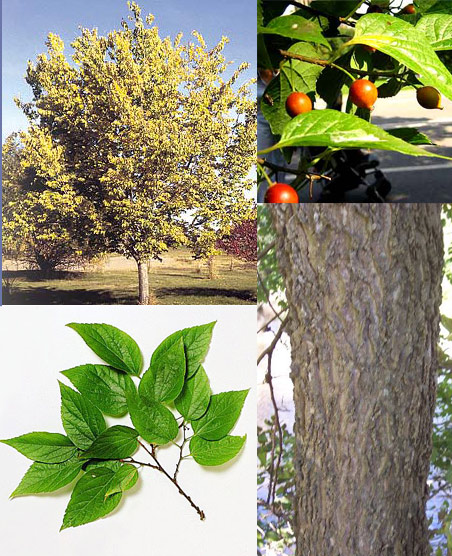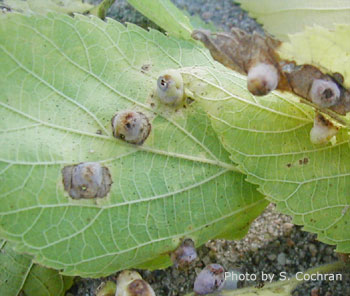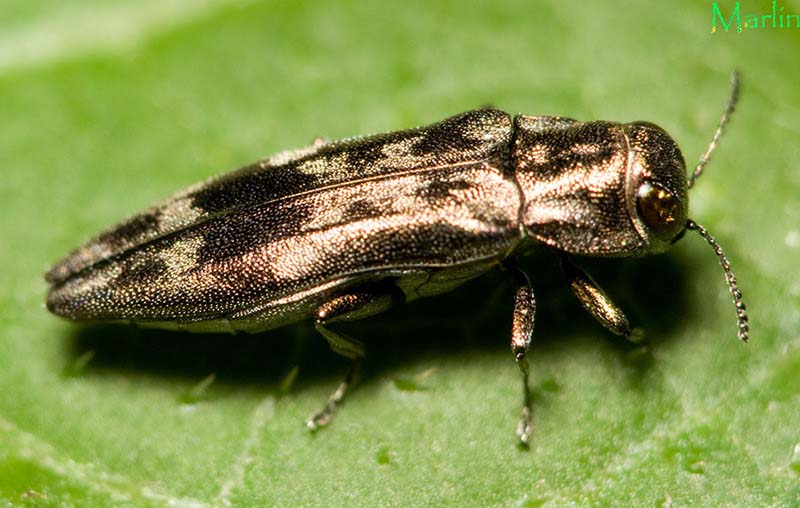





Hackberry trees are very similar to black cherry trees in looks. Some key differences are that they do not often grow in forested areas. The barks of the tow trees are similar but the rough bark of the hackberry tree is veined. You can feel the softer veins when running your fingers between the rough grooves.
 This tree produces berries. The berries are green for most of the year unlike the picture shows to the left. The main problem occurs on the leaves and is a very common problem. The picture to the right shows galls on the leaves of the hackberry. These galls multiply until it takes over the tree and it is no longer able to produce the food for the tree. A very good insecticide injected in the trunk will help cure this problem.
This tree produces berries. The berries are green for most of the year unlike the picture shows to the left. The main problem occurs on the leaves and is a very common problem. The picture to the right shows galls on the leaves of the hackberry. These galls multiply until it takes over the tree and it is no longer able to produce the food for the tree. A very good insecticide injected in the trunk will help cure this problem.
 The second problem associted with the hackberry tree we have not yet seen in this region but could spread here at anytime. It is the insect on the right hand side. It is a flat headed borer that is very similar to the two-lined chestnut borer that effects oak trees. This should be monitored until this insect arrives in minnesota.
The second problem associted with the hackberry tree we have not yet seen in this region but could spread here at anytime. It is the insect on the right hand side. It is a flat headed borer that is very similar to the two-lined chestnut borer that effects oak trees. This should be monitored until this insect arrives in minnesota.
What to watch for
1. Galls forming on the leaves in bunches
2. Holes in trunk
3. Canopy dieback
4. Branches dying randomly


